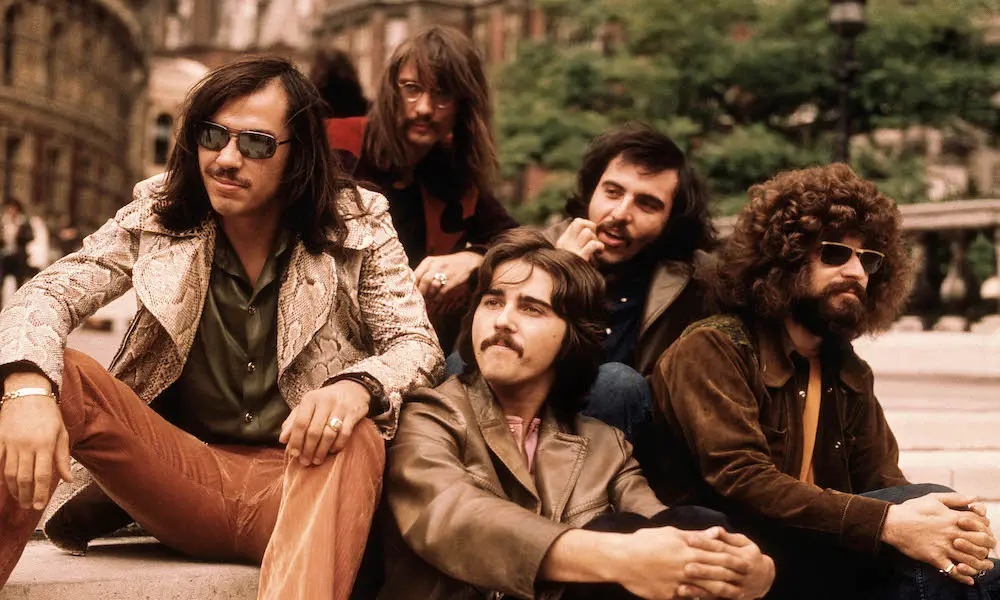Steppenwolf: Overview and Impact as Music Artists
Steppenwolf is an American-Canadian rock band formed in Los Angeles in 1967. Known for their raw, blues-infused rock sound, Steppenwolf became a defining force in the counterculture of the late 1960s and early 1970s. Led by John Kay (vocals, guitar), the band is best known for their anthemic hits “Born to Be Wild” and “Magic Carpet Ride.” Their music, often associated with rebellion and freedom, played a significant role in shaping rock’s early identity and popularizing the term “heavy metal.” Steppenwolf’s fusion of hard rock, blues, and psychedelic influences earned them a lasting legacy as trailblazers in rock music.
Key Phases in Steppenwolf’s Career
- Formation and Early Days (1967-1968): Steppenwolf was formed from the remnants of the Canadian band The Sparrows, with key members including John Kay, Jerry Edmonton (drums), Goldy McJohn (keyboards), Michael Monarch (guitar), and Rushton Moreve (bass). Their self-titled debut album (Steppenwolf, 1968) became an instant success, featuring the hit “Born to Be Wild,” which epitomized the free-spirited ethos of the counterculture.
- Breakthrough Success and Cultural Impact (1968-1971): The band followed their debut with a series of successful albums, including The Second (1968) and At Your Birthday Party (1969). Hits like “Magic Carpet Ride” and “Rock Me” cemented their reputation as a hard-rock powerhouse. Their music gained further cultural significance when “Born to Be Wild” was featured in the 1969 film Easy Rider, becoming an anthem for the counterculture movement.
- Lineup Changes and Evolution (1971-1976): Frequent lineup changes marked this period, but the band continued to release music, experimenting with different styles. Albums like Steppenwolf 7 (1970) and For Ladies Only (1971) showcased their versatility while maintaining their core rock sound. Internal tensions led to a brief disbandment in 1972.
- Reunion and Resurgence (1974-1980): Steppenwolf reunited in 1974, releasing new albums such as Slow Flux (1974) and Skullduggery (1976). While their commercial success waned, they remained a popular live act, drawing on their rich catalog of hits.
- Legacy and Later Years (1980s-Present): John Kay re-formed the band as “John Kay & Steppenwolf” in the 1980s, focusing on live performances. Although no new major studio albums were released, the band’s music has continued to resonate with fans, frequently appearing in films, television, and commercials. Steppenwolf officially retired in 2018, but their legacy endures.
Musical Style and Themes
Steppenwolf’s music is a blend of hard rock, blues, and psychedelia, marked by John Kay’s gritty vocals, driving rhythms, and anthemic choruses. Their lyrics often explore themes of freedom, rebellion, and societal critique, resonating with the countercultural spirit of the 1960s. Songs like “Born to Be Wild” encapsulate the exhilaration of independence, while tracks like “The Pusher” critique drug culture.
Legacy and Influence
- Pioneers of Hard Rock: Steppenwolf’s high-energy sound and attitude helped lay the groundwork for the hard rock and heavy metal genres, influencing bands like Deep Purple, Black Sabbath, and AC/DC.
- “Born to Be Wild” and Cultural Impact: “Born to Be Wild” is often credited with coining the term “heavy metal” in its lyrics, becoming a rallying cry for freedom and rebellion. Its inclusion in Easy Rider solidified its status as an anthem for the counterculture.
- Timeless Appeal: Songs like “Magic Carpet Ride” and “Born to Be Wild” remain staples of classic rock radio and continue to inspire new generations of listeners.
- Enduring Live Presence: Steppenwolf’s electrifying live performances maintained their relevance long after their peak, with John Kay becoming a respected figure in the rock world.
- Influence on Rock and Pop Culture: Steppenwolf’s music has been featured in countless films, TV shows, and commercials, embedding their songs in the collective consciousness.
Conclusion
Steppenwolf’s fusion of hard rock and blues, combined with their rebellious spirit and anthemic songwriting, established them as one of the defining bands of the late 1960s and early 1970s. From their groundbreaking hits to their cultural significance, Steppenwolf’s legacy as rock pioneers and symbols of freedom remains undeniable.
YouTube Topic Channel:
https://www.youtube.com/channel/UC0aR1L5OoaiiaW73-bNl_Ug
References:
- Kay, J. (1994). Magic Carpet Ride: The Autobiography of John Kay. Starburst Publishing.
- “Steppenwolf Biography.” AllMusic, Stephen Thomas Erlewine.
- “Born to Be Wild and the Rise of Heavy Metal.” Rolling Stone, 2020.
- “The Countercultural Anthem: Steppenwolf and Easy Rider.” Classic Rock Magazine, 2019.
- “Steppenwolf’s Legacy in Rock History.” The Guardian, 2018.


Leave a Reply